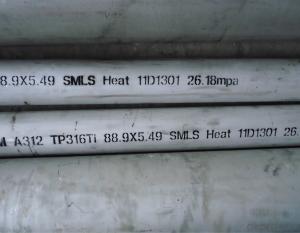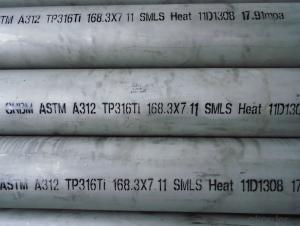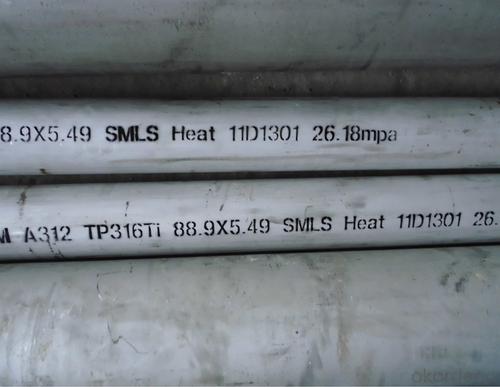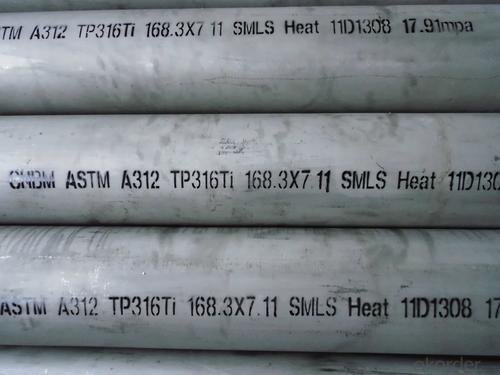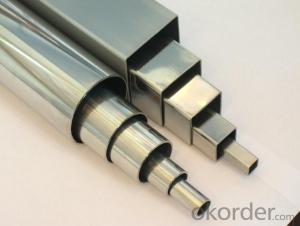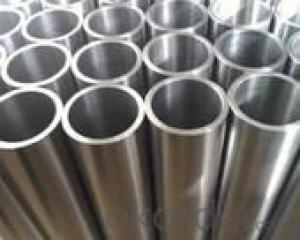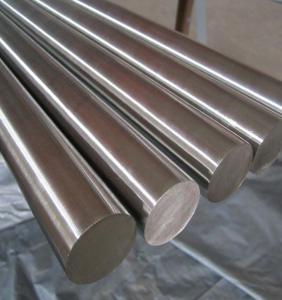Stainless steel pipe 316Ti 7
- Loading Port:
- China Main Port
- Payment Terms:
- TT OR LC
- Min Order Qty:
- -
- Supply Capability:
- -
OKorder Service Pledge
OKorder Financial Service
You Might Also Like
316Ti stainless steel plate is the addition of Ti in SUS316 steel can improve the resistance to intergranular corrosion resistance.

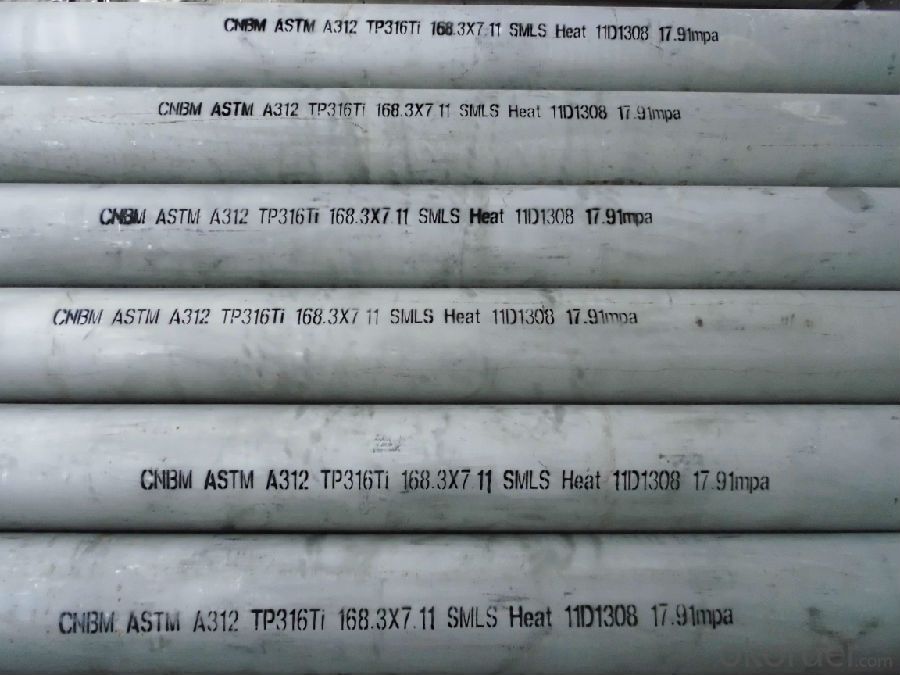
The chemical composition of 316Ti stainless steel:
C (%): less than 0.08
Si (%): less than 1
Mn (%): less than 2
P (%) is less than or equal to: 0.045
S (%) is less than or equal to 0.03
Cr (%): 16 ~ 18
Ni (%): 10 ~ 14
Mo (%): 2 ~ 3
other (%):
5 (C+N) = Ti = 0.70, N = 0.10
The mechanical properties of 316Ti stainless steel:
YS (Mpa) = 205 TS (Mpa) = 520 EL (%) is more than or equal to 40 Hv 200 degrees
- Q: What is the difference between 304L and 316L stainless steel pipes?
- 304L and 316L, both stainless steel pipe types, have distinct differences in their chemical composition and specific properties. With a lower carbon content, 304L stainless steel is a variation of 304 stainless steel. This characteristic grants it greater resistance to sensitization, i.e., the formation of chromium carbide at grain boundaries, which can lead to intergranular corrosion. Due to this lower carbon content, 304L stainless steel pipes are commonly utilized in environments where sensitization is a concern, such as welding applications or corrosive settings. Conversely, 316L stainless steel is an austenitic stainless steel that boasts the inclusion of molybdenum. This element enhances its corrosion resistance when compared to 304L stainless steel. The addition of molybdenum strengthens its ability to combat pitting and crevice corrosion, making it suitable for use in more aggressive environments like marine or chemical processing settings. Regarding mechanical properties, 316L stainless steel pipes generally exhibit higher tensile strength and yield strength than 304L stainless steel pipes. Consequently, 316L stainless steel pipes are more suited for applications necessitating greater strength and durability. In summary, the primary disparity between 304L and 316L stainless steel pipes lies in their chemical composition and corrosion resistance properties. 304L stainless steel pipes offer enhanced resistance to sensitization, while 316L stainless steel pipes provide heightened corrosion resistance, especially in more aggressive environments. The selection between these two types depends on the specific requirements of the application and the environment in which the pipes will be employed.
- Q: Can stainless steel pipes be used for drinking water supply?
- Yes, stainless steel pipes can be used for drinking water supply. Stainless steel is resistant to corrosion, making it a safe and reliable material for transporting drinking water. It does not leach harmful chemicals into the water and is highly durable, making it suitable for long-term use in water supply systems.
- Q: How do stainless steel pipes compare to titanium pipes?
- Stainless steel pipes and titanium pipes have their own unique characteristics and are used in various applications depending on specific requirements. In terms of strength, titanium pipes are generally stronger than stainless steel pipes. Titanium has a high strength-to-weight ratio, making it ideal for applications that require lightweight but strong materials. Stainless steel, on the other hand, is known for its excellent tensile strength and durability but is relatively heavier compared to titanium. When it comes to corrosion resistance, both stainless steel and titanium pipes are highly resistant to corrosion. However, titanium pipes offer superior corrosion resistance, especially in aggressive environments such as seawater or chemical processing applications. Stainless steel pipes also have good corrosion resistance, but may require additional coatings or treatments to enhance their resistance in certain conditions. Another aspect to consider is the temperature resistance. Titanium pipes can withstand high temperatures without losing their strength or structural integrity, making them suitable for high-temperature applications such as aerospace or power generation industries. Stainless steel pipes also exhibit good heat resistance, but their performance may vary depending on the specific grade of stainless steel and the temperature range involved. Cost is an important factor to consider as well. Stainless steel pipes are generally more cost-effective compared to titanium pipes. Titanium is a more expensive material due to its scarcity, difficult fabrication process, and higher production costs. Therefore, if cost is a significant consideration, stainless steel pipes might be a more viable option. In summary, stainless steel pipes and titanium pipes have their own advantages and are suitable for different applications. Titanium pipes offer superior strength, corrosion resistance, and heat resistance, but come at a higher cost. Stainless steel pipes provide good strength, corrosion resistance, and cost-effectiveness. Ultimately, the choice between the two will depend on the specific requirements, budget, and intended application of the pipes.
- Q: Can stainless steel pipes be used in the agriculture industry?
- Yes, stainless steel pipes can be used in the agriculture industry. Stainless steel pipes are highly resistant to corrosion, making them ideal for agricultural applications where exposure to moisture, chemicals, and other corrosive substances is common. They are commonly used for irrigation systems, water supply lines, and various agricultural processes that require durable and long-lasting piping solutions. Additionally, stainless steel pipes are hygienic, easy to clean, and can withstand high temperatures, making them suitable for agricultural processes that involve food production and processing.
- Q: Stainless steel welded pipe or seamless pipe expensive?
- From the brand can understand: domestic grade Cr smaller numbers are more expensive, the sum of Cr after the larger the number the more expensive, more expensive Cr symbols and so on. Foreign steel also has some rules: such as the stainless steel, the same series of numbers of bigger, longer, more expensive and more letters.
- Q: Are stainless steel pipes resistant to chemical corrosion?
- Stainless steel pipes possess resistance against chemical corrosion. This attribute is a result of the abundant chromium content within stainless steel, which generates a safeguarding oxide layer on the pipe's surface. This layer acts as a barrier, effectively obstructing chemical substances from interacting with the steel beneath and inducing corrosion. Moreover, stainless steel pipes exhibit resistance against alternative corrosion types, including rusting, thereby establishing their widespread utilization across industrial, commercial, and residential sectors where exposure to chemical substances is anticipated.
- Q: How do stainless steel pipes compare to nickel alloy pipes?
- Both stainless steel pipes and nickel alloy pipes are widely utilized in various industries for their corrosion resistance properties, high strength, and durability. Nevertheless, there are noteworthy distinctions between these two materials that should be taken into account during comparisons. A primary difference lies in their composition. Stainless steel pipes consist mainly of iron and chromium, with additional elements like nickel and molybdenum added to enhance corrosion resistance. On the other hand, nickel alloy pipes are primarily composed of nickel, with the inclusion of other elements such as chromium, iron, and molybdenum. Regarding corrosion resistance, both stainless steel and nickel alloy pipes offer exceptional protection against corrosion. However, nickel alloy pipes are recognized for providing superior resistance to a broader range of corrosive environments, including highly acidic and alkaline conditions. This makes nickel alloy pipes more suitable for applications requiring extreme corrosion resistance, such as in chemical processing plants. Another factor to consider is the mechanical strength of the pipes. Stainless steel pipes are known for their high strength, making them suitable for applications requiring structural integrity and the ability to withstand high-pressure environments. Conversely, nickel alloy pipes offer even greater strength and toughness, making them ideal for applications involving high temperatures and extreme conditions, such as in the oil and gas industry. Cost is another aspect to consider when comparing stainless steel and nickel alloy pipes. Stainless steel pipes are generally more cost-effective and readily available compared to nickel alloy pipes. Nickel alloy pipes tend to be more expensive due to the higher cost of nickel and other alloying elements used in their production. Therefore, the choice between stainless steel and nickel alloy pipes often depends on the specific requirements of the application and budget constraints. In conclusion, both stainless steel pipes and nickel alloy pipes offer excellent corrosion resistance and mechanical strength. While stainless steel pipes are more cost-effective and commonly used in various applications, nickel alloy pipes provide superior corrosion resistance and strength in extreme conditions. Therefore, the selection between these two materials depends on the specific needs and requirements of the application at hand.
- Q: What is the difference between seamless and cold-drawn stainless steel pipes?
- The main difference between seamless and cold-drawn stainless steel pipes lies in the manufacturing process. Seamless pipes are made by piercing a solid billet of stainless steel and then rolling it to form a cylindrical shape, resulting in a smooth and continuous surface without any welded seams. On the other hand, cold-drawn pipes are produced by pulling a stainless steel bar through a die to create the desired shape, resulting in a smoother surface finish compared to hot-rolled pipes. Additionally, cold-drawn pipes have tighter dimensional tolerances and are typically used in applications where precision and a high-quality surface finish are required.
- Q: How do you calculate the weight of stainless steel pipes?
- To calculate the weight of stainless steel pipes, you need to know the outer diameter, wall thickness, and length of the pipe. Using these measurements, you can apply the formula: weight = (outer diameter - wall thickness) x wall thickness x length x density of stainless steel. The density of stainless steel is typically around 7.9 grams per cubic centimeter.
Send your message to us
Stainless steel pipe 316Ti 7
- Loading Port:
- China Main Port
- Payment Terms:
- TT OR LC
- Min Order Qty:
- -
- Supply Capability:
- -
OKorder Service Pledge
OKorder Financial Service
Similar products
Hot products
Hot Searches
Related keywords
